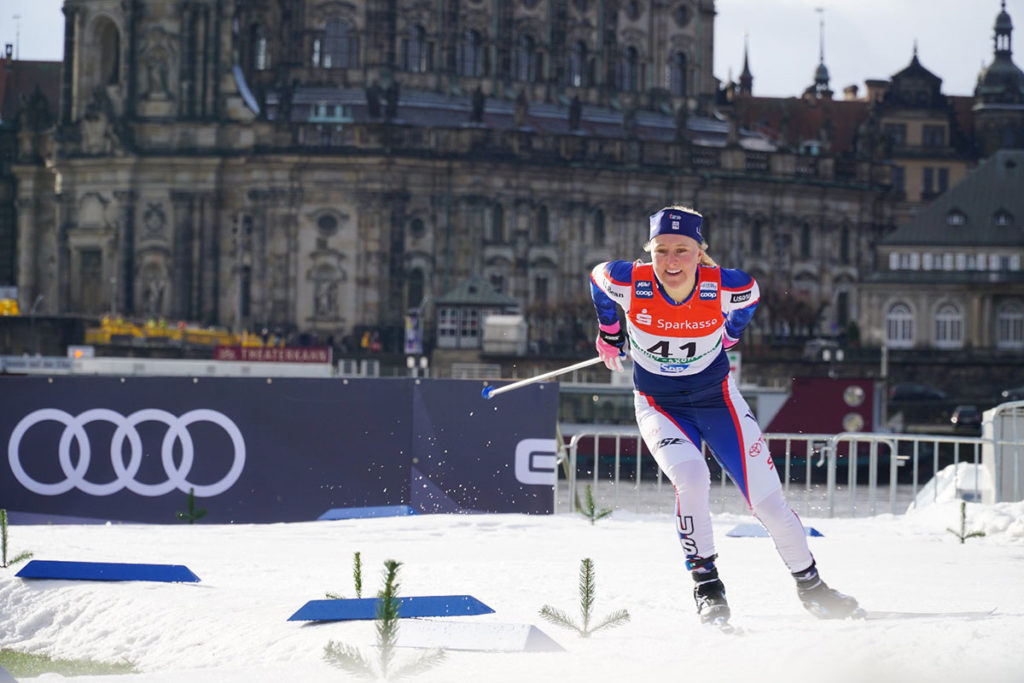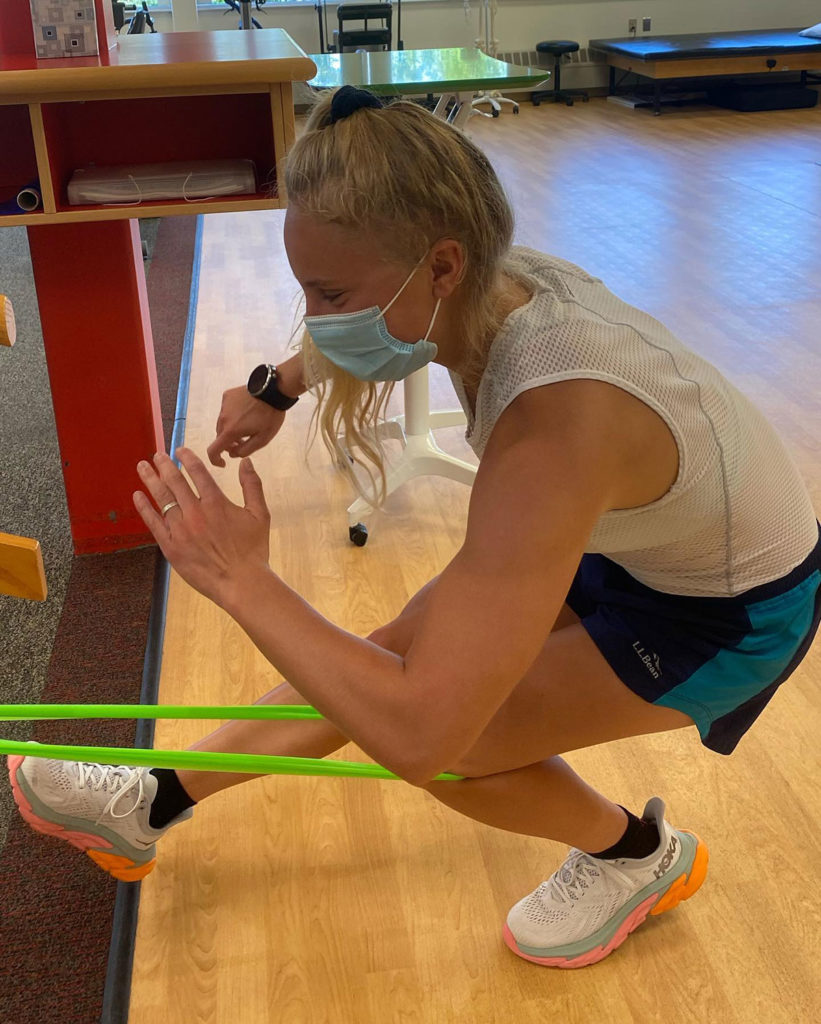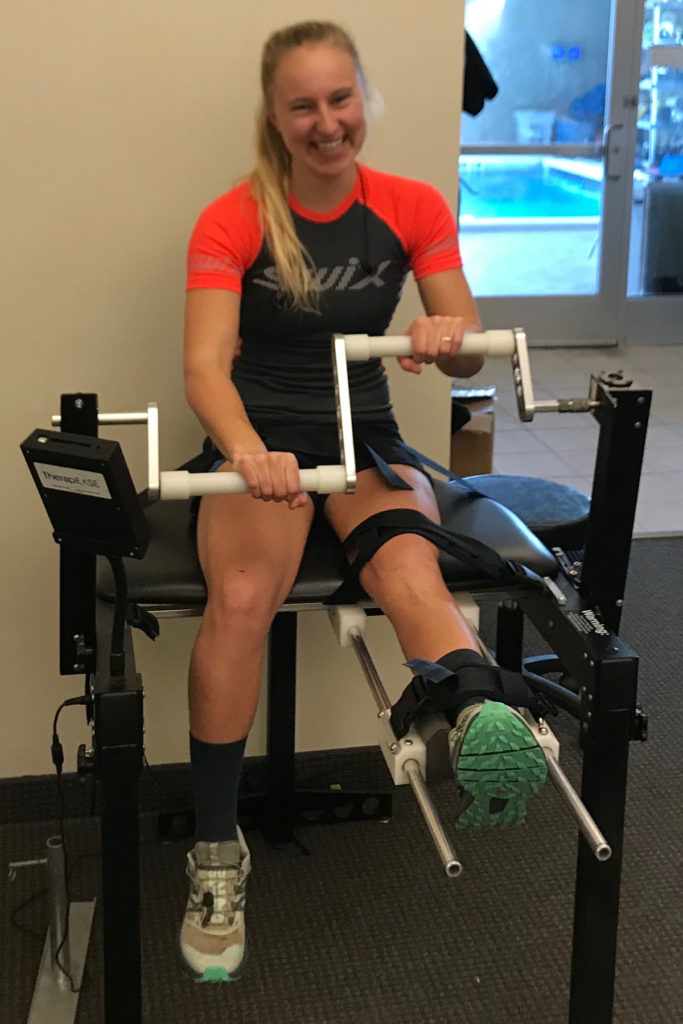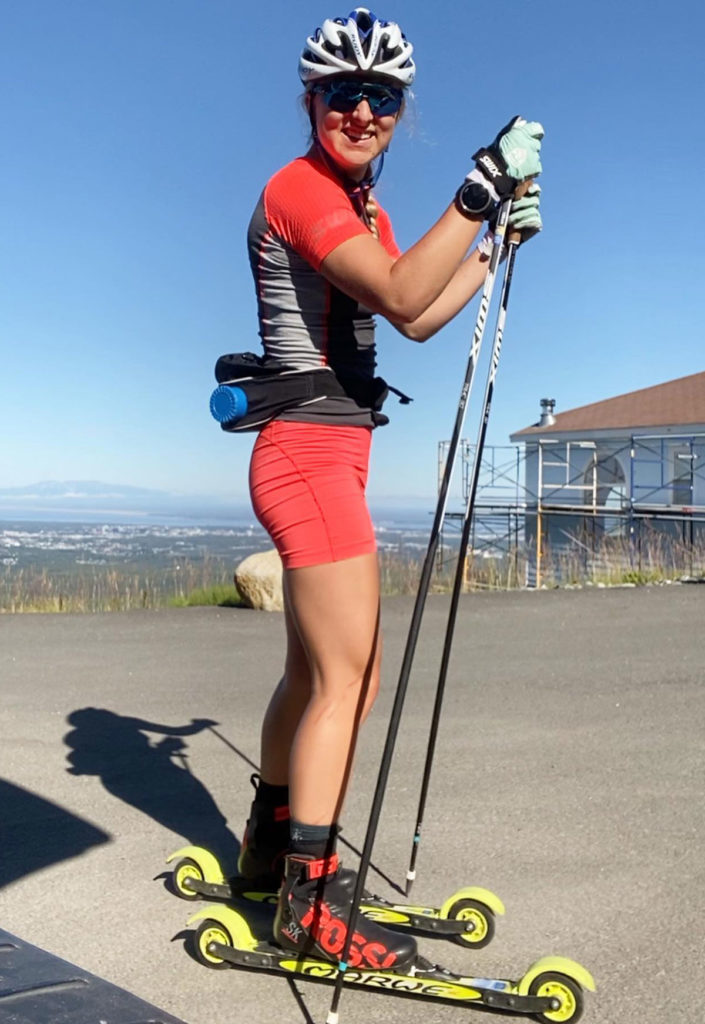Many of the people who have supported me throughout my ongoing recovery process have echoed a simple idea: that athletes return to their sport after an injury even stronger or faster than they were before.
I like the theory’s inspirational mindset, but as an analytical soul, I need logic behind a large claim like that in order to buy in. The farther I make it in my rehab, however, the more I think there is some logic behind this phenomenon. I’ve seen it happen in others, and I think it might have something to do with making new habits and having a greater appreciation for the here and now of day-to-day life.
My catalyst for upending old habits came after being hit by a car while crossing a street in November 2019. I suffered a traumatic brain injury and had to have reconstructive surgery on my left knee. It forced me to spend the past year recovering instead of ski racing, and I had to relearn how to do things I’ve been doing for 20 years. I’ve spent hours in physical therapy, training and strengthening my mechanics so I can properly walk, run and ski. It’s been challenging and often painful, but the first time I was able to walk across a room without crutches or pedal a complete rotation on a spin bike, I experienced an appreciation for life that was incredibly simple and incredibly powerful.

In high school, a sports psychologist recommended I start a gratitude journal. She told me to write down three things every day for which I was thankful. She said they could be anything—big things like family or friends or little things like having a cookie or getting an A on a test. I was skeptical. But I didn’t want to show up to our next meeting with nothing, so, with a hint of attitude, I started the journal. I started paying attention throughout my day to new things I could write down each night. I began establishing a new habit of noticing things for which I could be grateful, and I began to realize how good my life was and how being grateful for that fact made me happier.
I learned two important things from the assignment. First, forming new habits makes change that will last. And second, being grateful makes you happier.

Many of us will watch an inspiring movie, read a self-help book or even just hear a story with a good moral and realize for a moment what life could feel like if we were always aware of whatever lesson we just learned. We decide we’re going to change and make large, often vague resolutions like “I’m going to work harder,” “I’m going to be a better partner,” “I’m going to eat healthier,” or “I’m going to exercise.” But anywhere within five minutes and a week, we forget we ever had that moment of inspiration.
The difference between resolutions for self-betterment and actual habits is that when life gets in the way of habits, we don’t tend to quit them—we don’t quit brushing our teeth or drinking coffee when life gets busy.
I believe you can’t expect change if you don’t change what you’re doing. If you want real change that lasts longer than a fleeting moment of inspiration, you have to make new habits. And new habits that will last have to be simple and sustainable.

My injury robbed me of my innate habits and routines. I couldn’t carry a glass of water to the couch, never mind walk, run or ski. But as I rebuilt my routines, I was able to perform a “habit spring-clean” and realized that some of the ways I’d begun to do things were better than before.
One of the main habits I’ve changed involves my sleep schedule. Prior to my accident, I tended to stay up and sleep in as late as I could while still making it to training. In the first few months after the accident, however, I slept a lot more than usual due to the brain injury. Once I was healthy enough to return to team training, I decided to set a new sleep schedule. It had been so long since I had slept in my original sleep pattern (about 11:30 p.m. to 7:15 a.m.) that I didn’t feel any need to return to it. I realized I would be better off going to bed earlier and waking with more time to eat and prepare for practice (10 p.m. to 6:30 a.m.). I also began reading my emails more thoroughly and cooking healthier meals while I wasn’t training or in school and therefore had more downtime. Even after I returned to school and training, I kept up these new habits because I realized they improved my life in subtle but significant ways. They exemplified the difference between large, vague resolutions like “I’m going to improve my life” and new habits that make change a reality.
As I’ve slowly regained my health and ability to train with my team, I’ve also realized the value of things that I didn’t previously notice. Like having teammates around. Sleeping in whatever position I want. Being able to carry my own glass of water to the couch. Being able to walk and run and ski. Having a support network. Being able to race.
I haven’t yet been able to race, but I’ve regained a lot of what I lost, and I’ve been reminded of the simple virtues of things like going to practice, laughing with a teammate or going for a run. I realize how grateful I am for my life and the people in it, and that has made me happier.

As I head into this race season, I can say what I already know: I am coming in after a training season that looks nothing like anything I’ve ever done. And for many logical reasons, that feels pretty darn scary. But I also still believe in what I learned in high school from my gratitude journal assignment: You can’t expect change if you don’t change what you’re doing.
I’ve certainly changed what I am doing, and I think that gives me an incredible opportunity to learn new things that will make me a faster ski racer and a more grateful human being. And those two things go hand in hand.
—
After growing up in Truckee, California, Hannah Halvorsen moved to Anchorage, Alaska in 2017 to become a full-time college student and a member of the elite team at Alaska Pacific University (APU). In the upcoming issue of Cross Country Skier, she profiles Rosie Frankowski, a current teammate on the APU elite team who’s deeply involved in giving back to her community. Subscribe now to get a copy or find it in our online store.